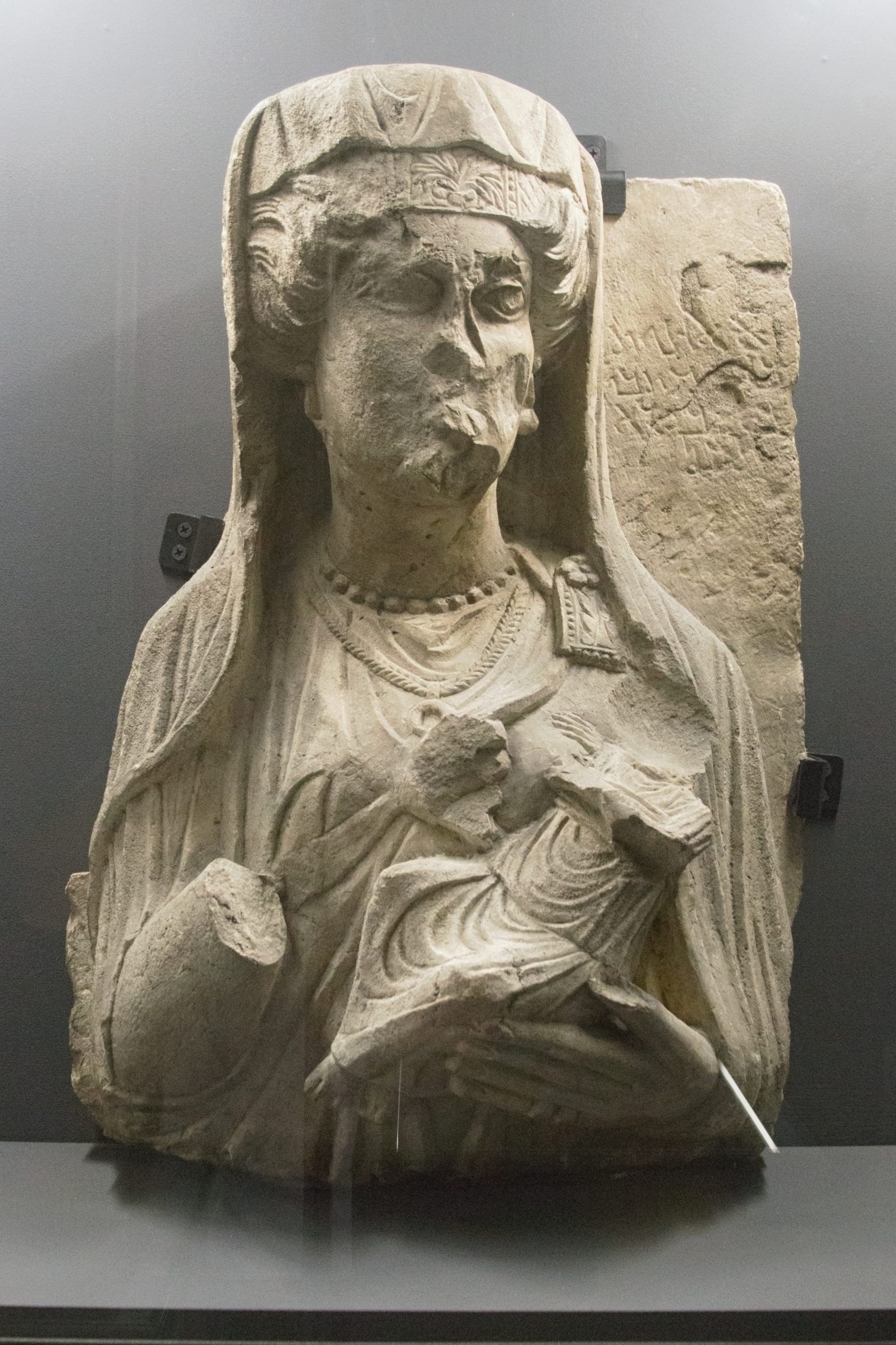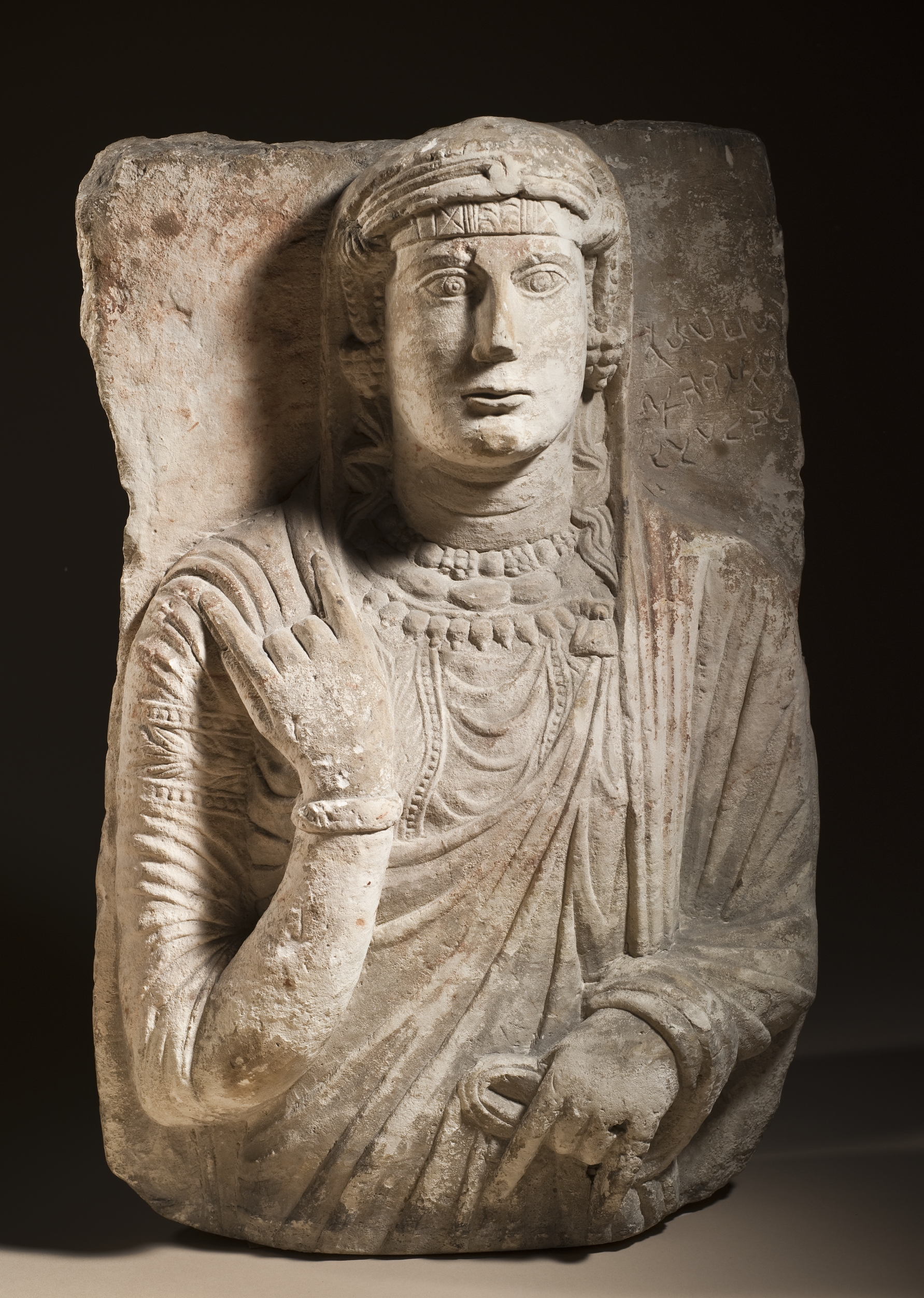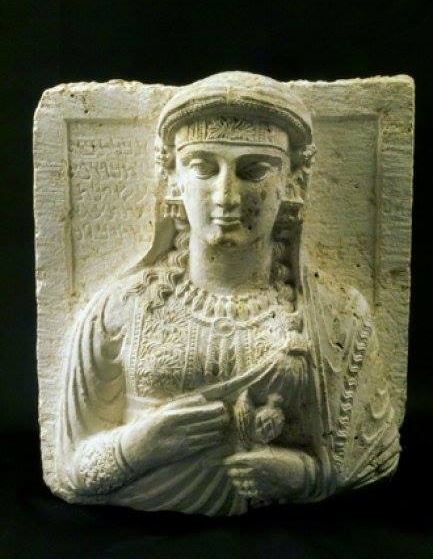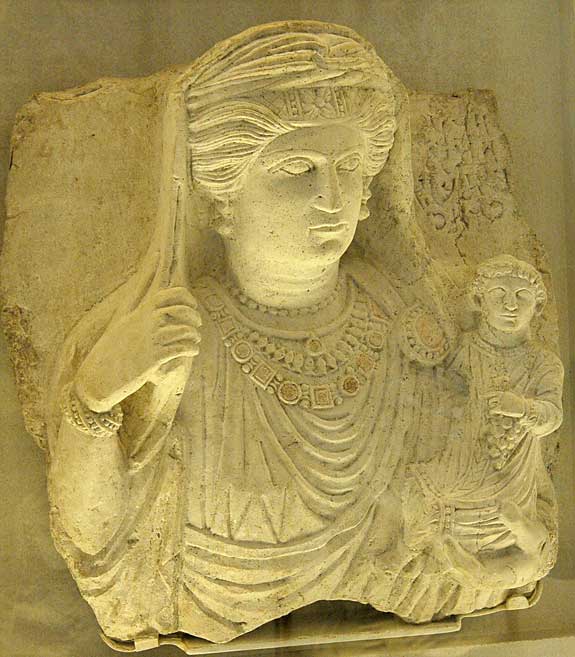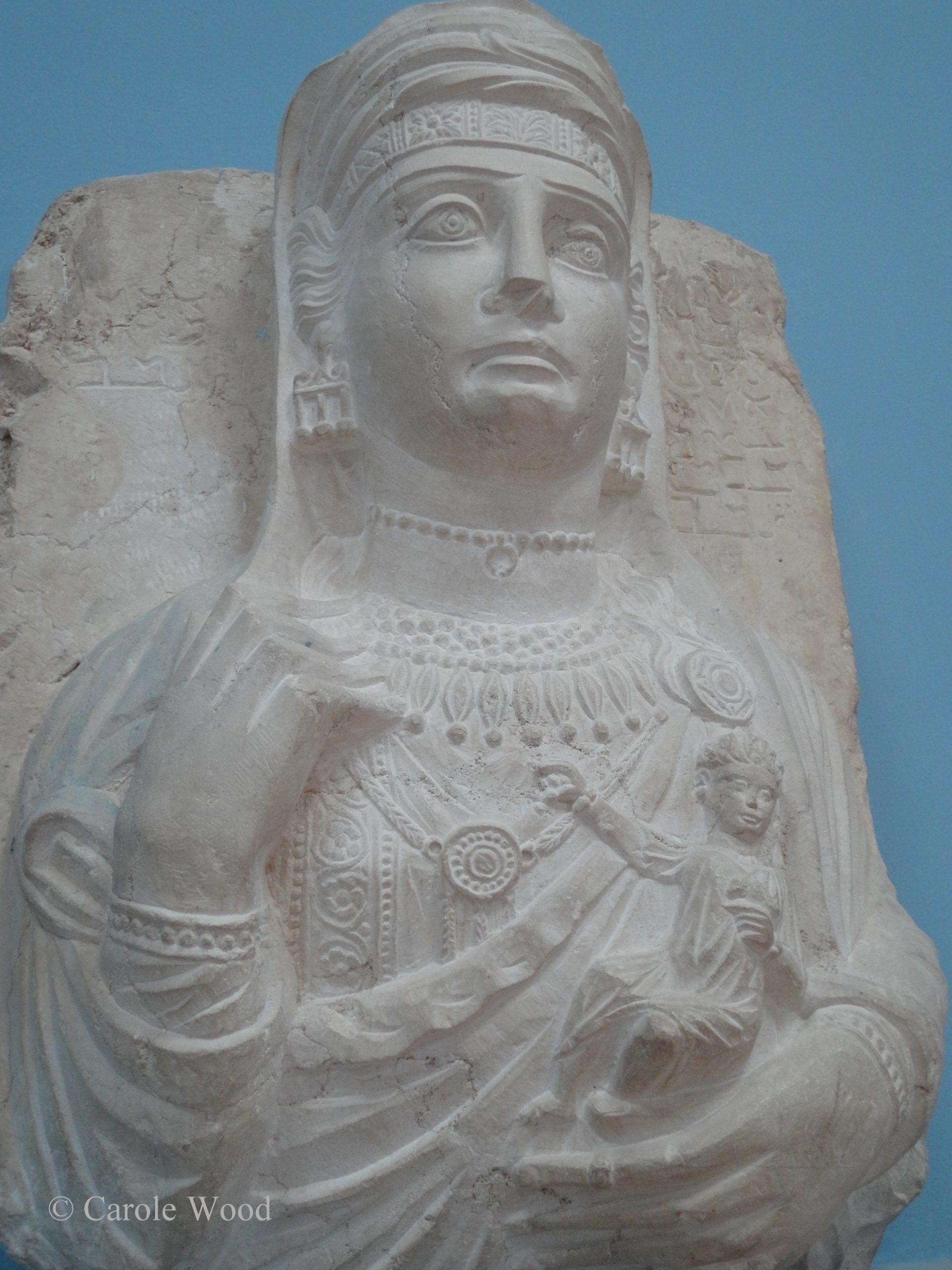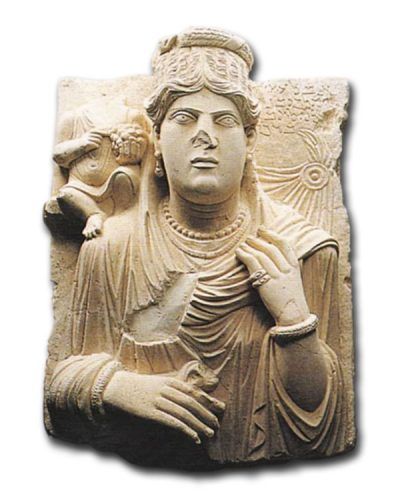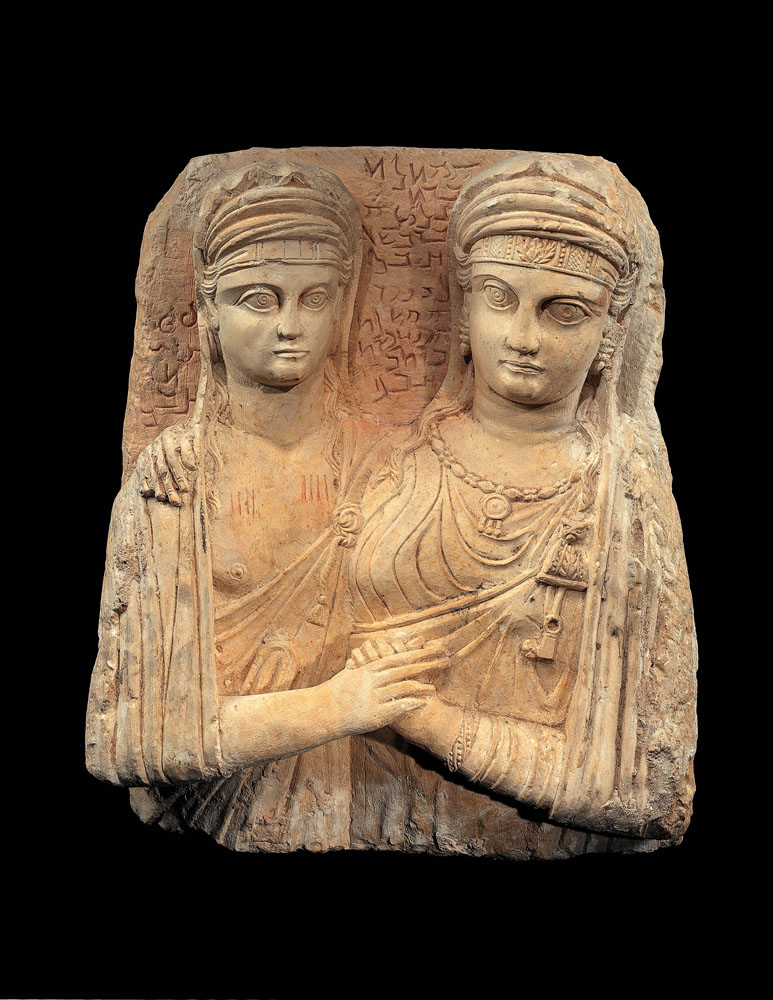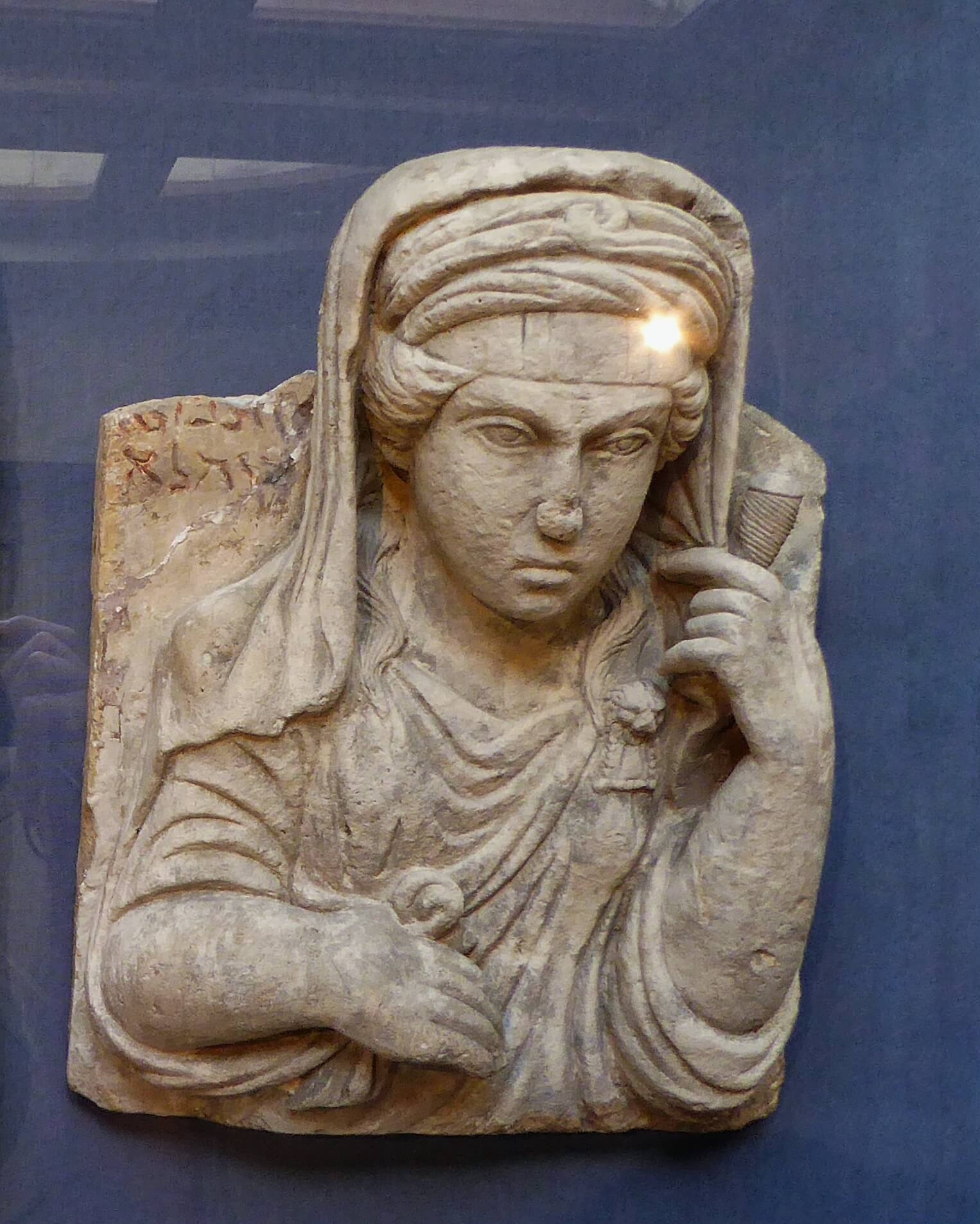Relief of Ba’altega and her two sons: Šim’on [Simon] and Hayran [Hairan]. Dated 150-200 CE

Museum description:
“Family is clearly a focus of commemoration here: Hairan’s hand is on his mother’s shoulder, and while each figure has his or her individual inscription, the inscriptions connect the deceased to one another and to a wider family network. Ba’altega wears a full set of jewelry for her tomb portrait, and in her left hand she holds a spindle and distaff, which are emblems of female industry. Her two sons carry evidence of the city’s (and perhaps the family’s) agricultural wealth: Šim’on holds a bunch of grapes, and Hairan has a cluster of dates dangling from his left wrist.”
“The relief depicts a woman in elaborate costume flanked by two children above, left and right. The monument has been dated by Harald Ingholt. The woman in the center is touching the edge of her veil with the usual gesture of her raised right hand; she holds a ceremonial object, like a cord with pomegranate tassels, against her upper stomach with the left hand. She wears jewelry where it is possible for display, from gold bands in the hair to triple-pendant earrings, to four different types of necklaces, to bracelets on both wrists, and, finally, to rings on her fingers.
The children behind her seem to be a young girl with a necklace or apron of fruits, on her right, and a slightly older boy, a ceremonial tassel in his left hand, on her left.
There are three inscriptions on the relief. The one belonging to the woman is located to the right of the veil and extends to the left side of the head of the child on the right. It reads “daughter of Hayran, Alas!” The inscription to the right of the child on the right, belongs to that child and reads “Hayran, her son.” The inscription on the left, belonging to the child on the left, reads “Simon, her son.”
A head of a lady carved in the same style but with hair arranged somewhat differently has been placed by Harald Ingholt in Group II of the Palmyrene funerary monuments and dated about A.D. 150—200 (Comstock, Vermeule, 1976, p. 258, no. 404).”

